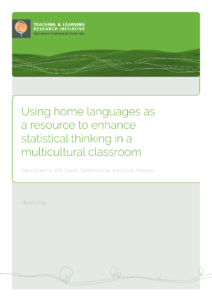Summary
This project explores the challenges and strategies of teaching mathematics and statistics to English second language students in New Zealand. The study acknowledges the diverse linguistic and cultural backgrounds of learners and emphasizes the importance of recognizing and appreciating this diversity to promote positive identities and engage learners in their learning process.
The research highlights the language challenges faced by students, such as the lack of suitable vocabulary in their home languages for mathematical concepts and the lexical ambiguity of probability terms. It also discusses the benefits of using students’ first languages as a resource for thinking and communication, which can enhance their understanding of mathematical concepts.
The study adopts a language-as-resource approach consistent with New Zealand’s culturally responsive pedagogy principles. This approach involves using cultural games, such as the Hawaiian game Lulu, to teach probability concepts in a fun and engaging way. The use of games helps students understand probability in a culturally responsive environment and improves their attitudes and motivation to participate in mathematical activities.
The research design follows a design-based research theory, which involves a cyclic process of action and critical reflection. The study was conducted in two cycles, each consisting of a preparation and design phase, a teaching phase, and a retrospective analysis phase. The research participants included three male teachers with varying levels of experience working with culturally diverse students.
Data collection methods included audio recordings of student group discussions, field notes, and student interviews. The data were analyzed using thematic analysis and coding to identify patterns related to the research question. The findings suggest that using home languages, addressing lexical ambiguity, and providing non-linguistic cues can make mathematical language more accessible to learners.
The study concludes that a language-as-resource perspective can make mathematics teaching and learning more inclusive and effective for English second language students. It also emphasizes the importance of culturally responsive pedagogy and the need for teachers to be sensitive to the cultural and linguistic backgrounds of their students.
AI was used to prepare this summary. The full version of the report (sans AI) is available in:
PDF format or as a Web page




